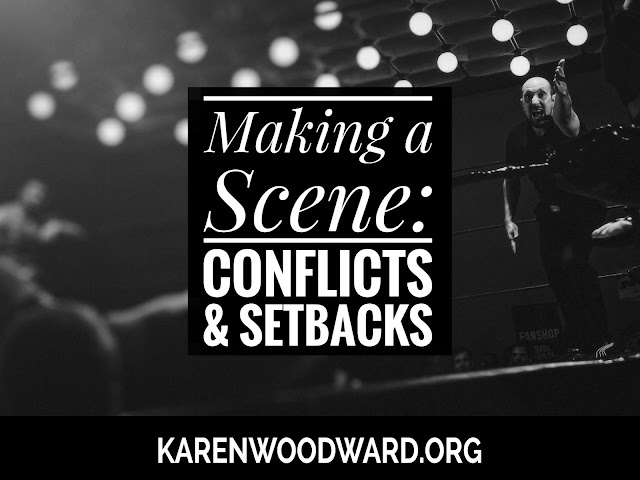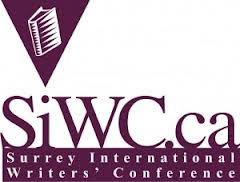I was mulling over what to write about for this post when I realized I haven't told you about the workshop I took from Donald Maass on creating standout characters.
Donald Maass is head of the
Donald Maass Literary Agency in New York which sells more than 150 novels per year to major publishers in the U.S. and overseas.
His latest book is
Writing 21st Century Fiction: High Impact Techniques for Exceptional Storytelling in Modern Fiction. Much of the material Donald Maass talked about in his workshop was taken from
Writing 21st Century Fiction.
By the way, if something I've written looks wrong it's my mistake, not Donnald Maass'.
How To Make Your Characters Pop Off The Page
What makes a character 'pop' off the page? How can you construct a character your reader will immediately care about? That's our goal.
As head of a New York literary agency, Donald Maass reads many manuscripts. He said there is something missing from almost every protagonist. One thing.
But let's step back for a moment. Before we talk about what's missing, let's go over the three basic types of protagonists:
1) Everyman/Everywoman
This kind of protagonist is like you and me. They are ordinary, at least to begin with.
Write down your favorite thing about your protagonist. Why do you love them?
Now, ask yourself: How can readers immediately experience this quality I love?
2) Hero
This kind of protagonist is already strong. Brave. Important.
Perhaps their job puts them in danger. They are responsible.
If your protagonist is a hero type, write down one way in which they are human, ordinary and regular, just like everyone else. Perhaps they are superstitious. Perhaps they have self-depreciating humor. Perhaps their car won't start.
3) Dark protagonist. Anti-hero
This protagonist has self-loathing. Many paranormal characters fall into this category. Perhaps they are a werewolf, a shapeshifter or a vampire.
If your protagonist is like this, write down one way your character want to change. One way they wish to be less tormented. What would that look like? What could the end of suffering look like for this character? How can they be more human?
Let your reader feel, let them see, your character yearning for change.
The one thing that's missing
Let's go back to what DM said, above, about one thing being missing from practically every manuscript he reads. It's this: he didn't care about the protagonists after reading the first page.
You NEED to find a way to make your readers care about your protagonist ON THE VERY FIRST PAGE.
DM suggests that if there's no way you can make your reader care about your protagonist in the first page that you might want to rethink your opening.
Our goal: to create a sympathetic character
The goal is to create a sympathetic character your readers care about. Some people say you want to create a protagonist readers can IDENTIFY with but not necessarily CARE for. DM disagrees. The reader needs to care about your protagonist, not simply identify with them. (See also:
How To Get Your Readers To Identify With Your Main Character.)
So, how do you get your readers to care about your characters?
What makes
you care about people?
Probably a number of things. We like people who are
strong, who are
good, who are
principled and who are
brave.
Readers want something to cheer for.
So, how do you accomplish this?
Creating a sympathetic HEROIC character: what DOESN'T work
Here's what NOT to do: use an action opening that makes your protagonist seem perfect. DM says that action openings leave readers ice cold. They don't care. The protagonist is too perfect.
Your reader needs to see your protagonist as a real person. They need to see they're human. Your protagonist, especially if they're a hero type, needs an
ordinary thing (for instance, a car that won't start, a superstition, and so on).
Creating a sympathetic DARK character: what doesn't work
These protagonists are sexy, haunted, alluring, they look great in leather. They're tormented, depressed, miserable. Who wants to be around
that?
Your readers back away from suffering. What we don't back away from is HOPE.
How to get readers to care about your character:
You need to find a way to make your character STRONG, REAL and give them HOPE.
As you write your characters ask yourself: What engages your
heart? What makes
you feel connected? Drawn in?
After the opening
So far we've talked about how to get your readers to care about your protagonist on the first page, certainly in the first couple of pages. Now let's talk about how to KEEP your readers caring about them.
Give your main character a FOUNDATIONAL ATTRIBUTE
Even ordinary characters (type one, above) have one thing they are exceptional at. Something they know a lot about in which they're an expert.
- Are they analytical?
- Are they faithful?
- Are they curious?
- Are they determined?
Now give your protagonist a habit or tick that suggests they're the opposite of whatever foundational attribute you've given them.
For instance, let's say your protagonist is highly focused, that's his foundational attribute. Have a scene where he's in an ice cream parlor. He's so highly focused he can't do a simple thing like decide what kind of ice cream to get.
Your character needs weaknesses as well as strengths. Make sure that in at least three places in your manuscript you show your character's weakness, his quirk.
I want to stress that DM thought we needed to be specific when we show how our character's foundational attribute benefits them as well as how it hurts them.
Ask yourself, what can your main character DO that no one else can? Now write a scene where this ability is a benefit and another where it's a hindrance.
Your Character & Self-Awareness
What does your character know about herself that is true?
There is something about them that is even MORE true, but they don't know it yet. What is it?
When and through which character are you going to clobber your protagonist with a recognition about him or herself? When would be a good time to do this?
What is one thing your protagonist knows about people that no one else does?
Why does he know this? Is it because of who he is?
In your story include a character on whom your protagonist cannot get a read.
Who does your protagonist love the best? What is one thing that is bad or unflattering about this character? What is one thing they do wrong, something that the protagonist sees through? The protagonist knows this character well enough to see something negative about them.
Pick any small thing in your story, something trivial, a little piece of friction between two characters. Make this illustrative of a larger principle at work in the world. Here is where you can give your protagonist an exposition. they can feel some anger, some sense of injustice, about what happened even though it is small.
What is the most selfless thing your protagonist does? confession, humility, forgiveness. Something they do for someone else. They sacrifice themselves.
Pick another of your characters. How will this character be changed by the selfless act of your protagonist? SHOW how they are changed by what your protagonist has done.
What makes a character interesting
Quirks are interesting, it's probably why we have so many quirky detectives.
Characters that are special, gifted, are interesting. Characters who see more, who care more than WE DO are interesting.
Did you ever have a slog day? Sure you have, we all have. Those days we just want to go back to bed. We've also had days when we're alive, our brains are on fire. We feel in command of ourselves and our world. Those days we want to be alive. THESE ARE THE KIND OF CHARACTERS READERS CARE ABOUT.
Make your characters
real.
Your protagonist can, in a way, always be ON.
Antagonist
In a romance, the hero is often the heroines antagonist and
vice versa. The hero and heroine need to be together but something is keeping them apart. What does the heroine want? Love? Security? Respect? The hero is getting in her way, he is slowing her down.
What does your antagonist believe in? What is their ONE TRUTH?
In what way is the antagonist's one truth actually right and true? What do they think is wrong with the world? What is REALLY wrong with the world?
Write a scene about the moment when your protagonist understands and accepts that the antagonist is right (perhaps not globally, but about some one thing), that their one truth is really true. Do they humble themselves and say, "You're right. I see it"?
What is the moment when your protagonist realizes that the antagonist is right? It's sometimes said that those who hate us know us the best. In a sense, your protagonist and antagonist will know each other very well.
What does your antagonist most want to bring about? What is their perfect world?
What is the WORST thing your antagonist does?
There is a thing your antagonist has sworn never to do, they think it's wrong. They say to themselves, "I'll do anything, anything at all, but never THAT" What is the thing they've sworn
never to do?
At some point your antagonist will do the thing they've sworn never to do. Why do they do it? They do it even though they
abhor it, they do it reluctantly and against their principles. For what good purpose was it done?
Remember: the antagonist is the hero of their own story.
Secondary Characters
Pick a secondary character, a friend of the protagonist. What is the single biggest way these characters are different?
Find one way to use what you've just written down in a scene. At what point in your story does this secondary character most understand and love your protagonist? At what point do they hate the protagonist?
What is their most important piece of shared history? What have they done together? What can this secondary character trust your protagonist for? What will the protagonist always do for them? Bail them out at 3 in the morning? Change their tire in the middle of a snowstorm?
Find a moment in your story where trust is broken, when the protagonist doesn't do what the secondary character trusted them to do.
What does the secondary character know about your protagonist that your protagonist denies? Is there a moment in your story when the secondary character calls your protagonist out?
What is the greatest gift the secondary character can give to the protagonist? The protagonist may not know they need this gift even though they do.
Underutilized secondary characters weaken a story.
That's it! If you ever have an opportunity to take a workshop from Donald Maass, do it! I've never met anyone who was disappointed.
Do you have any advice to add? Any questions you ask about your characters that helps them come alive?
# # #
NaNoWriMo update: Alas, I didn't get my 2,000 words done last night! I did 1,000 though, so I'm up to 25,081. Hopefully I'll be able to do 2,000 words tonight which will bring me up to 27,000.
Other articles you might like:
-
8 Do's And Don'ts Of Writing Fiction From Neil Gaiman
-
Using Technology To Sell Books: Quick Response Codes (QR codes)
-
Is Serial Fiction Profitable? Hugh Howey Says: Yes! Even With Absolutely No Promotion
Photo credit: "
Black & White Flower Pattern" by
VinothChandar under
Creative Commons Attribution 2.0.











